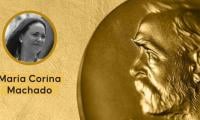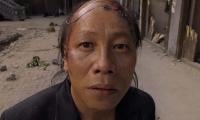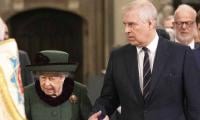On the brink of extinction
I was sitting in one of the classrooms of the Lahore University of Management Sciences (LUMS) this weekend. The yellow and green room, with white lights and furniture, reminded me American universities. But after every few minutes, I was in disbelief. The language being spoken in the classroom was Punjabi and we had all gathered for the first International Punjabi Conference.
The occasion being celebrated was International Mother Language Day, which is observed every year on February 21. The day has been organised by Unesco to raise awareness about the thousands of native languages that are now on the verge of extinction.
Speakers, mostly writers and poets, had arrived from all over the Punjabi diaspora. Very few students attended the event on the first day. A handful of them appeared on the second day and largely consisted of students who were enrolled in the Punjabi department at Sargodha University.
Some of the faculty members struggled to speak Punjabi or didn’t venture into that territory at all. Even Dr Tariq Rehman read his paper in English. But as I sat through the proceedings, I realised that not only was I struggling to understand the diction and poetry in Punjabi, I was also struggling to speak the language. This was not the case when I was growing up. How has this happened?
There is a great deal of discussion on Punjabi as a written language, which is indeed endangered. There is very little Punjabi left in popular culture. This wasn’t the case in the 1990s. As a child who grew up in the 1990s, we had enough opportunities to hear songs and watch dramas and films in Punjabi. My grandparents, our hired help and visiting relatives used to converse in Punjabi.
My grandfather and many elderly relatives whose command over Punjabi was sound and even literary in nature have now passed away. And the few hawkers and helpers who drop by at our house now tend to speak Urdu.
Punjabi as a vernacular language is just as threatened as its literary counterpart. Back in the day, there was a Punjabi transmission every evening on PTV. We had the usual news bulletin, some plays and even musical programmes in Punjabi. If Tariq Aziz’s Neelaam Ghar was popular, then Dildar Pervez Bhatti’s Panjnad also drew a wide audience. Though Pakistan’s private channels have proliferated, not many channel air Punjabi content. Even plays that are based in rural Punjab or the inner city of Lahore include romantic poetry and songs that are in Urdu. Actors tend to feign a Punjabi accent to add some authenticity.
PTV had a string of Punjabi singers and musicians which included the names of Noor Jehan, Mehdi Hassan, Nusrat Fateh Ali, Ghulam Ali, Amanat Ali, Iqbal Bano and Farida Khanum, among many others. Many of them became the face of post-Partition Pakistan internationally. Most of these musicians are now deceased and no one has been able to fill the vacuum that they have left. The new breed of musicians lacks star power and platforms are unavailable in Pakistan. Coke Studio and Bollywood aren’t sufficient to sustain their music careers.
In the 1990s, Punjabi cinema was dominated by aggression, sleaze, and patriarchy. But film directors like Sangeeta and Syed Noor created a niche for family drama and romance. Pakistani cinema eventually sank into near-oblivion until it was recently revived by media houses which started producing films.
Nevertheless, the Lahore-based industry is still in turmoil and little has been done to revive Punjabi cinema. Films like Punjab Nahi Jaungi and even Maula Jutt 2 are not exclusively in Punjabi. Punjabi cinema was an integral part of the indigenous film industry that grew after 1947. This is a major loss as there is still a market for Punjabi entertainment. If we want to salvage Pakistani cinema, we cannot overlook the market for Punjabi films.
The silver lining is that Punjabi is very much alive as a vernacular language in the smaller towns and villages of Punjab. However, young people who aspire to shift abroad or to larger cities tend to see Punjabi as a hurdle. There are a few literary-minded people who appreciate Waris Shah and Amrita Pritam. But such people are rare to find and mostly comprise students from smaller towns who make an effort to attend Punjabi literary events in Lahore whenever they can.
As a community and culture, we deserve to hear more Punjabi on a daily basis. Expecting the state to intervene and make this possible is both a lazy and risky undertaking. The demand made by some activists that Punjabi should be taught in schools appears to be valid. This will help introduce students to Punjabi at a young age.
The Punjab Assembly should at least lift its ban on speaking Punjabi during its sessions. If the various dialects pose a problem, the house should provide lawmakers with a translator. Furthermore, legislation should be drafted in English as well as in Punjabi.
Above all, we should encourage people to speak Punjabi on television and the radio. This will show the media houses that there is a demand for plays, films, music and entertainment shows in Punjabi.
On this International Mother Language Day, speak your ma boli regardless of what it that may be. May be you will enjoy it so much that every day will be your mother language day.
The writer is based in Lahore.
www.ammaraahmad.com
Twitter: @ammarawrites
-
 Nobel Foundation Reaffirms Its Core Responsibility To ‘safeguard The Dignity Of The Nobel Prizes’
Nobel Foundation Reaffirms Its Core Responsibility To ‘safeguard The Dignity Of The Nobel Prizes’ -
 Prince William, Kate Middleton Warned Of Meghan Markle’s UK Return
Prince William, Kate Middleton Warned Of Meghan Markle’s UK Return -
 Melissa Leo Reveals How Winning An Oscar Made Things Worse
Melissa Leo Reveals How Winning An Oscar Made Things Worse -
 Piers Morgan In Hospital: Here's Why
Piers Morgan In Hospital: Here's Why -
 IPhone 18 Pro Leaked: New Design Reveals Radical Corner Camera Layout
IPhone 18 Pro Leaked: New Design Reveals Radical Corner Camera Layout -
 Kung Fu Legend Siu-Lung Leung Passes Away At 77
Kung Fu Legend Siu-Lung Leung Passes Away At 77 -
 Kim Kardashian To Remove Ex Kanye West From Her Kids' Names
Kim Kardashian To Remove Ex Kanye West From Her Kids' Names -
 Queens Mother Arrested After Abducting Child From Court-ordered Visit
Queens Mother Arrested After Abducting Child From Court-ordered Visit -
 Sarah Ferguson Ready To ‘spread Her Wings’ After Separating From ‘disgraced’ Andrew
Sarah Ferguson Ready To ‘spread Her Wings’ After Separating From ‘disgraced’ Andrew -
 Finn Wolfhard Shares How Industry Views Him Post 'Stranger Things'
Finn Wolfhard Shares How Industry Views Him Post 'Stranger Things' -
 Dylan O'Brien Gets Nostalgic After Reunion With Old Friend
Dylan O'Brien Gets Nostalgic After Reunion With Old Friend -
 UK Doctors Warn Screen Time Is Harming Children’s Health
UK Doctors Warn Screen Time Is Harming Children’s Health -
 Meghan Markle To Get Police Protection In UK If Travelling With Archie, Lilibet
Meghan Markle To Get Police Protection In UK If Travelling With Archie, Lilibet -
 Spencer Pratt Expresses Hope For Taylor Swift, Travis Kelce's Wedding Invite
Spencer Pratt Expresses Hope For Taylor Swift, Travis Kelce's Wedding Invite -
 Evan Peters Makes Unexpected Confession About 'American Horror Story' Season 13
Evan Peters Makes Unexpected Confession About 'American Horror Story' Season 13 -
 Kentucky Grandmother Arrested After Toddlers With Broken Skulls, Ribs
Kentucky Grandmother Arrested After Toddlers With Broken Skulls, Ribs



